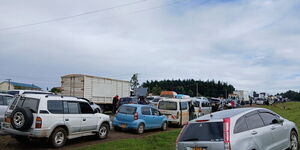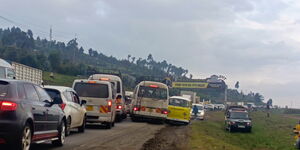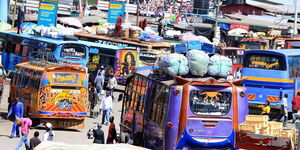There was panic on the evening of Wednesday, August 6, after a Super Metro bus caught fire in the middle of Naivasha Road, Nairobi.
Images and video obtained by Kenyans.co.ke captured the dramatic moments as flames and thick smoke poured from the bus.
The inferno appeared to originate from the rear of the vehicle, leading to speculation that the fire had started at the back.
The incident caused a traffic jam on the busy road. However, it is unclear whether the PSV was plying the Ngong Route or heading home for the day.
However, there was no indication of passengers at the scene of the fire, raising questions as to whether the bus was operating at the time of the incident.
At the time of publication of this article, no casualties had been reported, and the exact cause of the fire had yet to be established.
The fire incident took place along Naivasha Road, and it remains unclear whether or not the PSV was plying the Ngong Route or was heading home for the day.
Incidents of fires in PSVs are not uncommon in the country, with infernos stemming from different factors. In April, a bus attached to the Guardian Angel company burst into flames from the back, leaving passengers scampering for safety.
In extreme cases, mechanical issues, including overheated engines, broken fuel lines, or leaks in the oil system, can ignite flammable fluids within a PSV.
This is the latest incident involving a Super Metro bus, which has been marred by various controversies at the popular SACCO in recent months.
In April, the Transport Licensing Appeals Board (TLAB) tribunal slapped the SACCO with a string of strict compliance directives to allow resumption of operations.
This included the sacking of 269 drivers and the retesting of 42 other drivers with overspeeding violations at the Likoni Driver Test Centre for retesting.
At the time, Super Metro CEO Nelson Nduki faulted the crackdown on the SACCO, insisting it was one of the most compliant in the country, save for a few unfortunate incidents.












